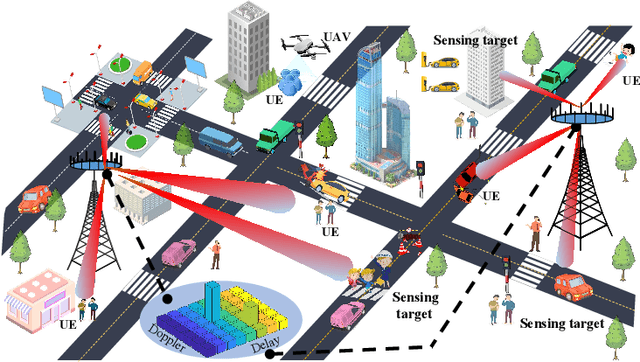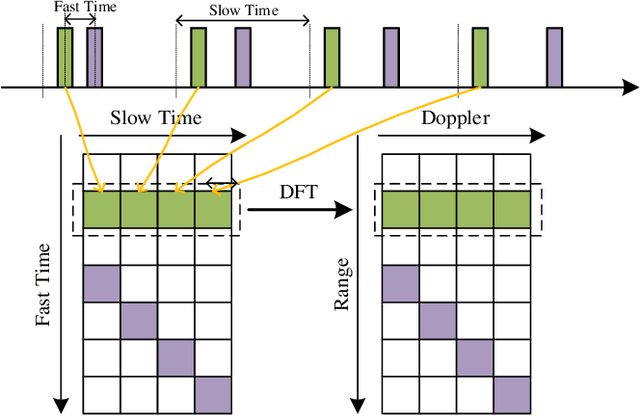From OTFS to DD-ISAC: Integrating Sensing and Communications in the Delay Doppler Domain
Paper and Code
Nov 26, 2023



Next-generation vehicular networks are expected to provide the capability of robust environmental sensing in addition to reliable communications to meet intelligence requirements. A promising solution is the integrated sensing and communication (ISAC) technology, which performs both functionalities using the same spectrum and hardware resources. Most existing works on ISAC consider the Orthogonal Frequency Division Multiplexing (OFDM) waveform. Nevertheless, vehicle motion introduces Doppler shift, which breaks the subcarrier orthogonality and leads to performance degradation. The recently proposed Orthogonal Time Frequency Space (OTFS) modulation, which exploits various advantages of Delay Doppler (DD) channels, has been shown to support reliable communication in high-mobility scenarios. Moreover, the DD waveform can directly interact with radar sensing parameters, which are actually delay and Doppler shifts. This paper investigates the advantages of applying the DD communication waveform to ISAC. Specifically, we first provide a comprehensive overview of implementing DD communications, based on which several advantages of DD-ISAC over OFDM-based ISAC are revealed, including transceiver designs and the ambiguity function. Furthermore, a detailed performance comparison are presented, where the target detection probability and the mean squared error (MSE) performance are also studied. Finally, some challenges and opportunities of DD-ISAC are also provided.
 Add to Chrome
Add to Chrome Add to Firefox
Add to Firefox Add to Edge
Add to Edge